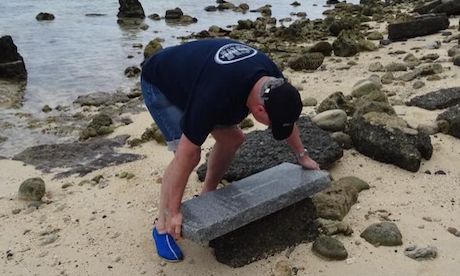The graves of 18 Cook Islands World War I ANZACs have been restored and protected from the encroaching sea in Rarotonga.
A group of volunteers, including the descendants of the veterans, have spruced up their grave sites by concreting and painting them.
They also repaired the headstones, as part of the Nikao Cemetery Restoration Project.
Gloria Walker was one of 65 Australian cancer patients buried at the Nikao cemetery on the Cook Islands’ largest island, Rarotonga, after seeking treatment from Milan Brych.
When her daughter Cate was in the Cook Islands tending to her mother’s grave, her husband Paul Morrisey found an Anzac headstone which had washed onto the beach.
“There was so much damage in the cemetery. There were headstones down on the shoreline and it was just a terrible mess,” Walker said.
“It was completely overgrown, it was just full of coconut trees, vines, I didn’t even know there were graves there.
“It was a complete jungle.
“I thought ‘that’s it, I’m doing something about this now.'”
Walker used social media to assemble a team of volunteers to restore headstones, and concrete and paint the grave sites.
She said that, during the years of neglect, at least 10 graves had been washed away in the tourist and cancer patient area.
Some of the ANZAC graves had also disappeared, and Walker went through the archives to establish how many soldiers had been buried on the site.
More than 300 Cook Islanders served with the Māori contingent in Europe and the Mediterranean during the Great War.
It is thought that this graveyard contains the largest group of Cook Islands veterans buried anywhere in the world.
Source
